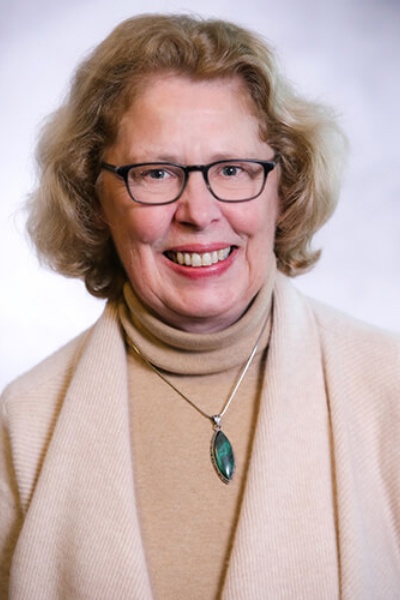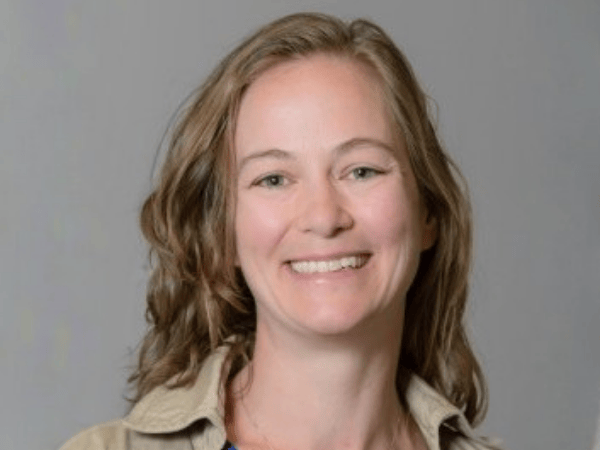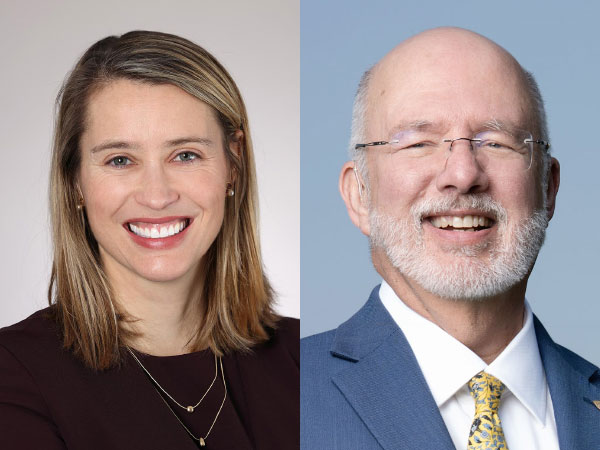Mary Lasker left a collection of detailed oral histories and a massive archive of documents, kept at Columbia University: 795 boxes and 7 flat boxes, which amount to 353 linear feet.
A collection so vast is an invitation to biographers.
Yet, biographers weren’t making a path to the archive with the purpose of documenting the life of the woman whose vision shaped today’s NIH and created the National Cancer Act of 1971.
This changed recently, when ACT for NIH, a non-profit that lobbies Congress to boost appropriations for biomedical research, published “Angel in Mink,” the first-ever biography of Mary Lasker.
“Mary’s story truly has been an untold story,” said Claire Pomeroy, president and CEO of the Lasker Foundation, which administers an award known as America’s Nobel Prize. “And I think in many ways it was because women often don’t get credit for doing the things that sometimes change the world. So, I think it’s fantastic that her story is starting to be told now and that the world will hear about it.”
The biography is posted on the Cancer History Project and the ACT for NIH website.
Pomeroy spoke with Paul Goldberg, editor and publisher of The Cancer Letter.
Paul Goldberg: Thank you for finding the time to talk with me. In front of me I have the Gunther book and the Cruikshank and Schultz book about Albert. But it’s interesting that there has not been a book about Mary. Why is that?
Claire Pomeroy: Mary’s story truly has been an untold story, as you say. And I think in many ways it was because women often don’t get credit for doing the things that sometimes change the world. So, I think it’s fantastic that her story is starting to be told now and that the world will hear about it.
Yes, and it’s interesting because Albert’s impact is not the same as Mary’s. But, of course, she couldn’t have had her impact without him. But still, it’s an interesting idea that there are two books about him. And, by the way, the second one is fantastic. The first one’s good, but kind of old.
CP: There are good books about him. I do think we tend to tell the stories of powerful businessmen more than we tell the stories of advocates, especially women, who often work behind the scenes—or in different ways.
Well, and she worked behind the scenes. She also worked really very much on the scenes; right?
CP: Yes, she used multiple methodologies to accomplish her aims. I think it comes across in the book. She was truly relentless.
She had a steeliness and drive toward getting to her goals that I think we can all learn from. As I see it, she always kept her eye on the prize. She did whatever it took, personal relationships, policy change, dinner parties, whatever it took for the cause.
I’m wondering how she ended up having that kind of a vision, because there’s no rational way to predict how things would play out in science… what is it, science fiction? Because there was no way to suggest that with something like, for example, viral oncology, you’re going to end up with immune oncology, and precision oncology, and all these Nobel Prizes. Did she actually see that? How?
CP: Well, it’s a fascinating question, and I don’t think she always predicted everything about science and how it played out. But what I do believe is that she was really good at soliciting the opinions of, and then listening to, really smart people. Like her relationship with Sidney Farber, she listened to what he had to say.
And so, I think her success probably reflects intelligence, for sure, but also the ability to connect with people in a way that she absorbed information and learned things.
What about the material that’s out there? I think most of it’s really still untapped, because what I see in Columbia is mind-blowing. If I were 20 years younger, I’d probably go there and start reading.
She had a steeliness and drive toward getting to her goals that I think we can all learn from. As I see it, she always kept her eye on the prize.
CP: The collection of her papers at Columbia is a gold mine, and it’s an untapped gold mine, as you say, in many ways. It’s a lot of papers in boxes. It hasn’t been digitalized or anything like that.
But I think it’s a treasure trove of information… maybe we won’t give you the assignment, but delving into it has the potential to really understand history and to really understand how one person can make such an incredible impact.
We could probably all learn something from studying those letters and those communications about how she did accomplish everything she accomplished.
Because there’s room for the final word for the definitive history, which by the way, I think has been written about Albert, the most recent book, the Cruikshank and Schultz.
CP: Yes. His story has been much better told. I agree. Until now.
This is an excellent first book on the subject, but it doesn’t claim to be the final word. This book is based mostly on oral histories. It shows that there is a need for a multi-year project and a 1,000-page doorstop.
CP: Well, I really like your point. Could reviewing all those papers give us even more insights into why she actually did this and how she did it? Maybe there are still things to learn there—yes.
It just would be a very different level of effort, one that would be academic and would take years and years, rather than putting it all together for the first time and saying, “Hey, there is something there.”
So, the other question I have is about Jed Manocherian. It’s fascinating to see his obsession with this, because it sort of happened after he’d got involved in cancers. He learned from Zerhouni and Collins about Mary Lasker. He’d never heard of her.
CP: So, great observation. I’m a big admirer of Jed Manocherian, and in a way, Mary Lasker and Jed Manocherian share some attributes that I think we should all consider emulating.


Source: John E . Fogarty collection, Providence College Archives and Special Collections, Phillips Memorial Library, Providence College
They’re both very successful people in their own rights who chose to take on a cause and put endless hours and endless effort, both of them, into advocating for medical research.
So, I think one of the reasons perhaps that Jed became so fascinated with Mary is he saw in some ways a kindred spirit—someone who was willing to make personal sacrifices, who could have lived a very comfortable life with less work than all this advocacy takes, and yet elected to do it because they wanted to change the world. And so, I wonder if that connection is one of the reasons he is so fascinated with Mary.
And she’s inherently fascinating too.
Oh yeah. But what’s also really interesting with him is that he’s probably going to use it as part of his campaign for NIH. So, it’s kind of using a book, to have people read it and think about look at what was possible then, and imagine what’s possible now, and that actually Mary’s vision does actually play out. It does happen. It’s not just some person sitting there fantasizing.
CP: So, I have no doubt that he hopes that that’s one of the outcomes of creating this book. I think he sees that telling the story will advance the commitment that he has to increasing NIH funding and making the world healthier.
We all understand in philanthropy that the way that you spur people to action is often through stories.
And the story of Mary, I think, should spur us all to action. Look at the impact that she had as an advocate for all of the growth in NIH, the medical breakthroughs, the fact that a cancer diagnosis means something very different today than when she started her work.
This story should encourage all of us to say, “Hey, why don’t we embrace this cause or a similar cause with that kind of passion and that kind of commitment?” So, I do anticipate that Jed—and all of us—can use this book to get the nation and the world, in fact, to take more action.
Absolutely. What about you? Will you be using this book? Will the Lasker Foundation be using this?
CP: I am delighted that the story of Mary Lasker has been told, and we absolutely will be using this book.
We’re distributing it to our board, to our donors, to the previous winners of Lasker Awards. I think it is a story that reminds us all that incredible work was done by her, but there’s work yet to be done.
It is wonderful that Mary Lasker’s story is being told, but she would want it to somehow catalyze even more enthusiasm for the mission of the Lasker Foundation, which is, in fact, to improve human health by increasing support for medical research—as she envisioned.
Do you think she saw her gender as an important part of her story in any way at all? I think she must have, because women were treated very differently at that time than they are now.
CP: So, although I never met her, I have to believe that she was so intelligent and therefore understood that for a woman to make a difference, for a woman to move around the corridors of the nation’s capital and talk to presidents and get the National Cancer Act passed, and get budgets raised for the NIH, that she understood that as a woman, she had to do it differently than a man could.
I’m sure she had insight into that. So, I think this is a story of how over the decades, one woman found ways that were effective, given the societal norms of the time, that were effective in driving change that very few people have ever been able to do.
Is there anything I forgot to ask? Anything you want to add?
Women often don’t get credit for doing the things that sometimes change the world. So, I think it’s fantastic that her story is starting to be told now and that the world will hear about it.
CP: Mary Lasker understood that government and philanthropy, academia and industry need to work together to accomplish goals. She also understood that patients and patient advocates were—and are—really, really powerful.
One of my favorite parts of Mary’s story is how she got Ann Landers to write the column encouraging people to write to their senators and their congressmen to fund cancer research. She understood how to mobilize people who were impacted by cancer.
I don’t know where she got that insight of how powerful that could be, maybe from Albert Lasker and how he did advertising, but maybe she just knew it.
So, I think her insights into how you mobilize patients, how you mobilize the public to make a change in government policy and drive something like medical research, that’s an important message for us even today, or maybe especially today.
Thank you very much for talking with me.












